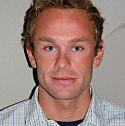The concept of a stem cell was first proposed by the German biologist Ernst Haeckel to describe how multicellular organisms are derived from a unicellular organism. In the almost 150 years that have passed since Haeckel’s initial proposal, the works of McCulloch and Till, Evans and Kauffman, Martin, Thompson, Takahashi and Yamanaka, and many others too numerous to list here, have significantly advanced the scientific and clinical applications of stem cells. As such, stem cells have transformed the manner in which scientists study human development and develop therapies to treat human disease and injury. In my presentation, I will reflect on the history of stem cell research, with an emphasis on the emerging trends and technologies related to human pluripotent stem cell-based research. In addition, I will discuss the current opportunities as well as challenges associated with moving stem cell based therapies from bench-to-bedside. Finally, I will discuss the rapid emergence of stem cell clinics in the United States and abroad that are offering unproven treatments for a variety of neurological disorders.
David Brafman, PhD, Assistant Professor, Arizona State University. David Brafman is an Assistant Professor in the School of Biological and Health Systems Engineering at Arizona State University. Prior to joining ASU, Dr. Brafman was the Kaehr Stem Cell Young Investigator at the Sanford Consortium for Regenerative Medicine at the University of California-San Diego. Dr. Brafman received his B.S. in Bioengineering from the University of California-Berkeley and his Ph.D. and M.B.A. from the University of California-San Diego. His laboratory uses an interdisciplinary approach that combines various aspects of developmental biology, genetic engineering, and bioinformatics to investigate the chemical, biological, and physical stimuli that govern human pluripotent stem cell fate. The laboratory uses these approaches to elucidate the mechanisms and design targeted therapies related to Alzheimer’s disease. Dr. Brafman’s work has been featured in journals such as Biomaterials, Cell Death and Differentiation, Nature Protocols, Stem Cell Reports, and Stem Cells and Development. His research and training have been funded by the Arizona Alzheimer’s Consortium, California Institute of Regenerative Medicine, National Science Foundation, and University of California Biotechnology and Research Program. Learn more about Dr. Brafman by visiting his institutional webpage HERE: Dr. Brafman can be contacted at David.Brafman@asu.edu.

